South Korea - Gyeongju
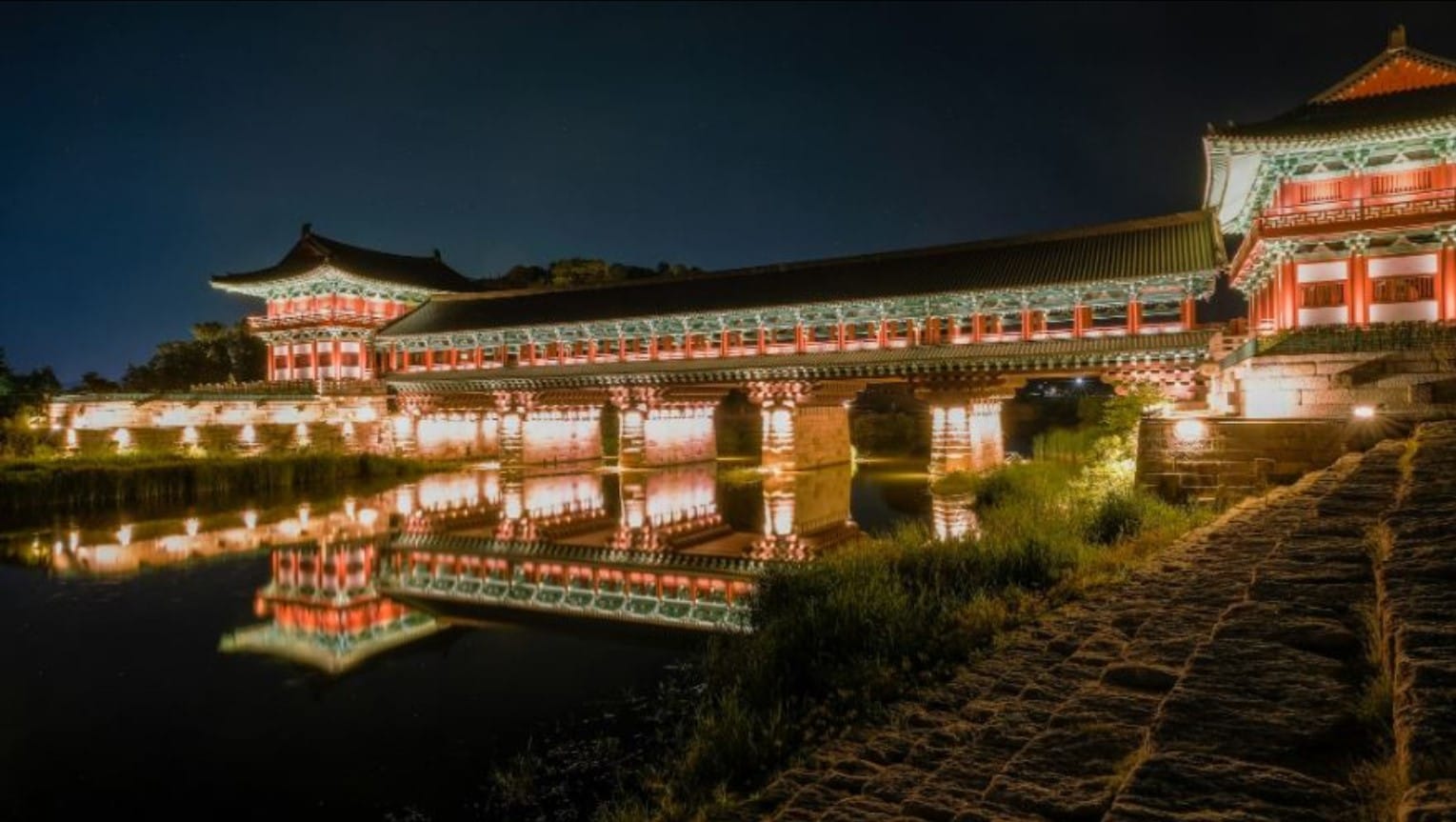
From Busan it was a short drive to Gyeongju, located on the east coast, the capital of the Silla Dynasty, (pronounced Shilla) reigning for almost 1000 years from 57BCE until 935CE. 56 kings or queens ruled during this period.
I had no idea that at the time, Gyeongju was the 4th largest city in the world with around 1 million inhabitants. Today it’s known as the museum without walls as it has more tombs, rock carvings, pagodas, Buddhist statuary and palace ruins than any other place in South Korea.
The Gojoeson Dynasty disintegrated in 108BCE when Emperor Wu of the Han Dynasty of China invaded and Three Kingdoms gradually established from the shifting alliances and rivalries between Silla, Koguryo, and Paekche.
By defeating its two rivals, the Silla, with Chinese help, unified Korea for the first time - Korea's Buddhist-inspired golden age.
While Europe wallowed in the Dark Ages, the Silla-era generated great art and scientific research - ideas flowed from China to Japan through Korea. The Silla kingdom was so rich that, according to one Chinese chronicler, every single one of the 170,000 houses in the capital had a tiled roof with rafters tipped in gold!
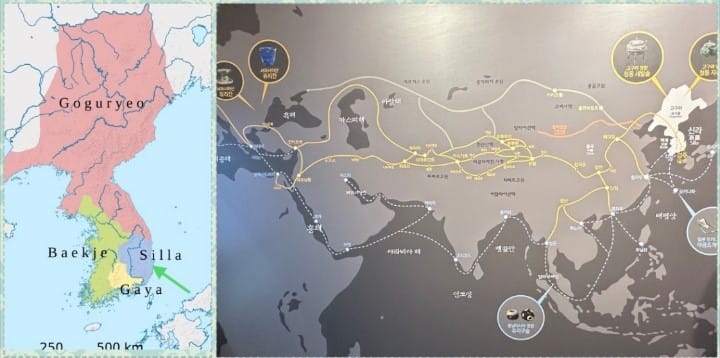
Ancient historians visiting the city mention Chinese, Muslim and Korean merchants trading side by side. Treasures from the four corners of the world included tortoise shell from the Philippines, glass from Persia and pearls from Japan, while items coveted by other kingdoms, produced in Gyeongju included bronze temple bells and smooth silk paper.
Muslim traders carried the name Silla to the world outside East Asia via the Silk Road. Geographers of the Arab and Persian world left records about Silla.
The first 215 years of the Silla Dynasty established political, legal, and education systems. Domestic and foreign trade (with Tang China and Japan) prospered. Confucian learning, mathematics, astronomy, and medicine also flourished.
Buddhism, introduced to the peninsula in 372CE, reached its zenith and had a profound effect on the country. The Confucian model, which placed women in a subordinate position within the family, did not have a major impact in Korea until the mid-Joseon period in the 15th century. Women in the Silla era had influence as advisors, dowager queens, and regents.
One example was Queen Seondeok of Silla (the 27th ruler between 632-647CE) - famed for encouraging a renaissance in thought, literature, and the arts, described as generous, benevolent and wise. During her reign Cheomseongdae Observatory was built using 365 stones representing the days of the year and twelve stones, the months of the year. At just 5.17M in diameter and 9M high it’s the oldest astronomical observatory in East Asia.1
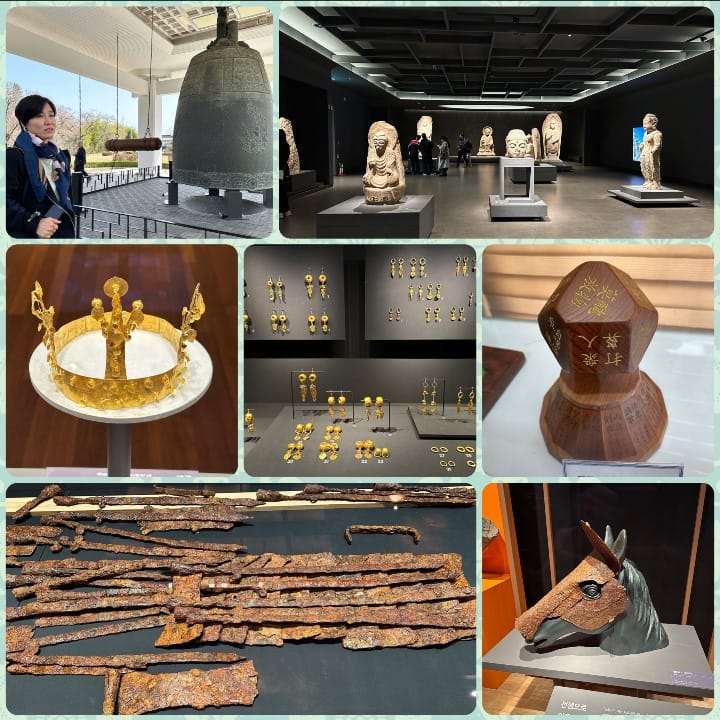
Silla society was dominated by hereditary status in the form of the bone rank system - one of the pronounced differences of Korea compared to its East Asian neighbours, which grouped people, based on birth, into royal/aristocratic hallowed bone and true bone categories, with everything, from the government office one was able to hold, to the clothes one could wear, being governed by this rank.
Initially only a seonggol (a descendant of two parents of royal blood) could rule, however in later times, ascending the throne with only one parent of royal blood, was permitted.
It’s no wonder then that Gyeongju became known as the city of gold, where the aristocracy enjoyed a high culture and extravagant pleasures.
The National Museum of Gyeongju is a showcase of Silla culture, displaying around 80,000 relics and artifacts including statues, magnificent jewellery, pottery, petroglyphs, crowns, and swords. Masters of ironmongery, they forged swords and axes, armour for both men and horses.1
Donggung Palace is all that remains from the Silla Kingdom’s huge palace complex which burnt to the ground in 935CE. In the early 20th century archaeological excavations were carried out and the magnitude of the complex was rediscovered. In all, there were 26 buildings but only three have been reconstructed.
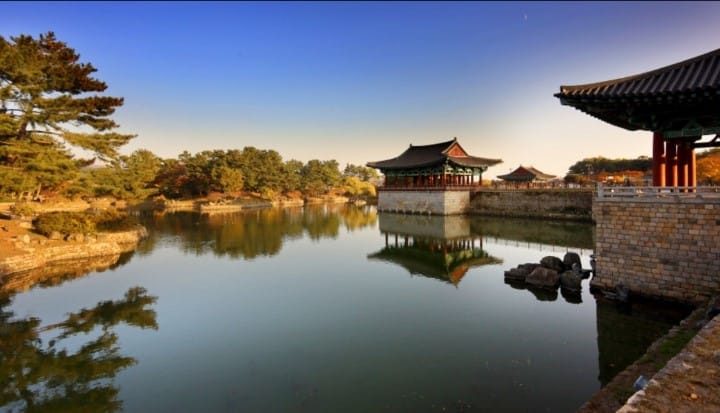
The palace is surrounded by Wolji Pond created in 674, by King Munmu and served as a place of pleasure to celebrate the unification of the Korean peninsula during the Silla Kingdom period.
The Silla buried their royalty, court officials and aristocracy in tombs covered by large grassy mounds. In 1973, a crown and other relics were excavated from one mound known as Cheonmachong (which means flying horse).
The name was given to this mound because a flying horse painted on the saddle cloth of a horse was found inside. In Tumuli Park in the centre of the city 20 tombs of varying sizes are located, many yet to be identified.
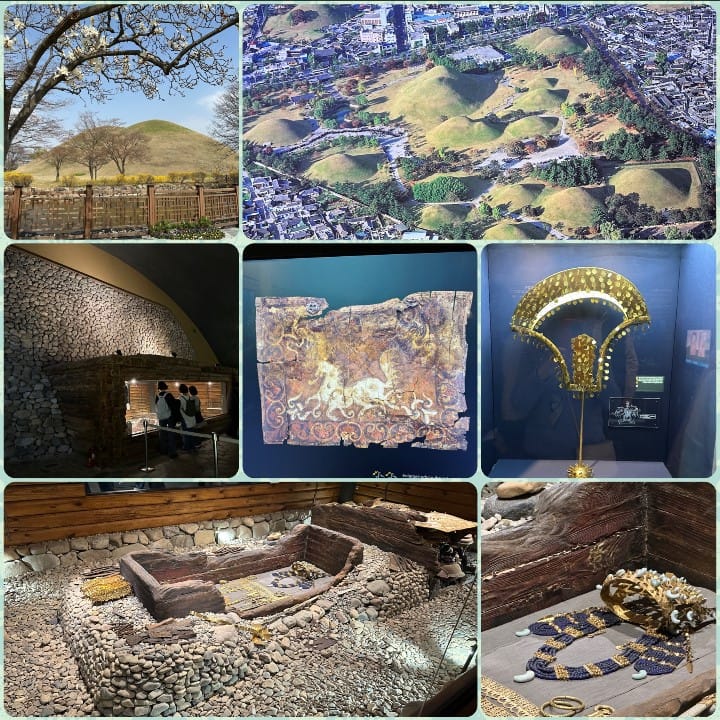
Towards the end of the 8th century turmoil ripped the Silla dynasty apart - half of the last 20 Kings died violently. Finally, Wang Geon took control attacking King Gyeongsun of Silla, who surrendered in 935CE. Wang Geon unified the region under the name Goryeo, forming the Goryeo dynasty, from which the modern name of Korea is derived.
So ends the illustrious history of Gyeongju, a beautiful city with a range of unusual and interesting sights. It was busy during our visit as it’s the Cherry Blossom Festival - alas someone forgot to tell the cherry trees - the long cold winter means the blossoms wont be at their peak for another week. Still, we saw lots of buds and the magnolias were resplendent.
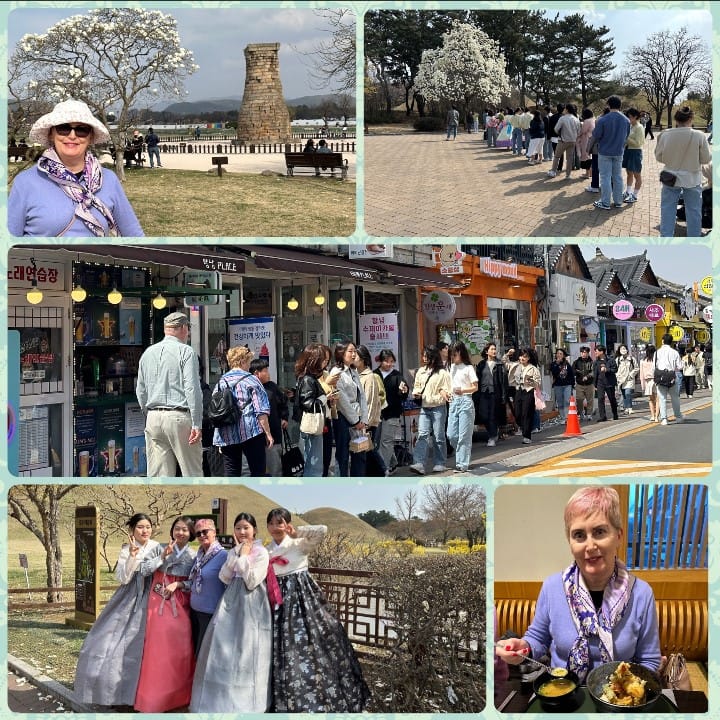
Although the history of Gyeongju as a capital was over, not so for the country of South Korea, which has suffered many upheavals. With the high point of Goryeo culture also came disorder, coinciding with the rise of the Mongols. Like much of Asia, Kublai Khan and his army invaded in 1231, enlisting thousands of Koreans in their failed efforts to invade Japan in 1274 and 1281.
Korea followed the Chinese Ming Dynasty in overthrowing the Mongols, heralding the Joseon Dynasty, the longest and last dynasty (1392-1910). With strong links to China the literati pushed for Confucianism, resulting in the ideologies of Korean culture seen even today. At the same time Buddhist principles were rejected with many temples destroyed, monks and their disciples moving to mountainous areas.
One such temple was Bulguksa Temple, thankfully rebuilt which we visited before leaving Gyeongju as it’s considered a masterpiece of the golden age of Buddhist art in the Silla kingdom, built during the reign of King Gyeongdeok in 751.
It’s a UNESCO heritage site now and home to six National Treasures, including two stone pagodas and two gilt-bronze statues of Buddha.
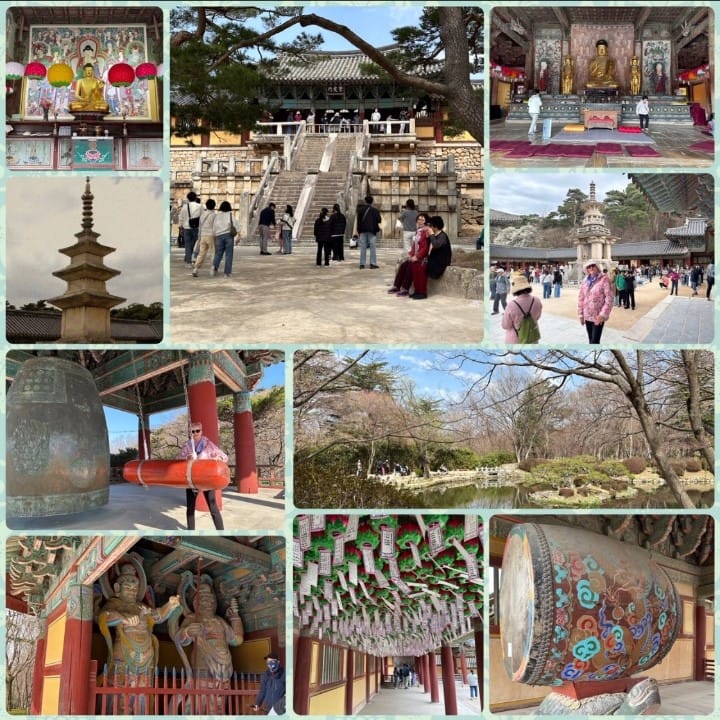
All too soon our time on the mainland of South Korea came to an end.
South Korea is a country of contrasts. A mix of fascinating history, culture, museums and landscapes. The people are kind and gracious; always looking for the latest and greatest trends, yet remain superstitious and hold on to their traditional customs, family remains important despite the birthrate being at a record low of 0.6.
Pills and potions to improve health and keeping fit is important; an obsession with personal appearance, so stores are filled with beauty products and cosmetic surgery promotions, yet cafes sell overly sweet treats and it’s hard to find a sandwich. The tea culture has been replaced with coffee - there are more Starbucks outlets in Seoul than NYC!
We were a little early for the cherry blossoms as the winter was long and cold. To our delight, we were rewarded with magnificent cherry blossoms, when we flew on to Jeju Island.
Known as the Hawaii of South Korea, join me in a few days to explore this picturesque island.
Credits
1 Study.com
